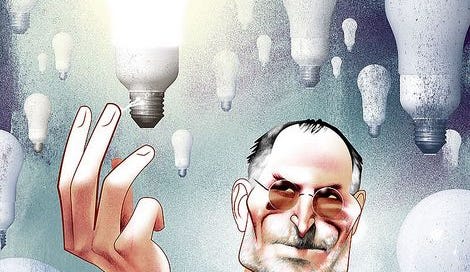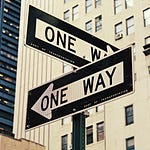Picture the boxing ring of business:
On one side, you have the old-reliable fighter. Sustainable, cash flowing, profitable-from-day-one. This fighter’s slogan is: build a business that works, and do it better than everyone else.
On the other side, you have the kinda crazy fighter. Pick the biggest problem to solve. The needle-in-a-haystack. This fighter’s catchphrase is: chase the vision, the profits will follow.
Each fighter gets chirped by the other side, but either one can win.
What kind of fighter are you?
It all comes down to your definition of reality.
Let’s go back to college for a second. Remember the risk-reward tradeoff?
It looks like this:
Stupidly straightforward.
Think US government bond on the bottom-left and boom-or-bust pharma stock on the top right.
This model works fine for investing.
It only breaks when you use it to figure out your life.
Let's say you want to invent bed sheets that make themselves. How risky is that?
On a scale of 1-10 — 1 being a lemonade stand, and 10 being mining the moon — maybe a 7?
If you ask 10 people, you’ll get 10 different answers.
My point is — no one knows.
Most people would tell you “it's impossible, move on."
If that were true, there would be a tiny amount of businesses, which would all be competing with each other.
Thankfully, that’s not the case.
You can't base your idea of what's possible on someone's opinion. Especially when that someone isn't even in the game.
That ability is what creates visionaries. It's called distorting reality.
Listen to this story about Steve Jobs:
In 1984, Steve Jobs asked one of his engineers, Larry Kenyon, to reduce the Mac’s boot time by 10 seconds.
Kenyon, stunned by the ask, said it wasn't possible.
Jobs then said, "if it would save a person’s life, could you find a way to shave 10 seconds off the boot time?"
Jobs found the nearest whiteboard to make his point:
If 5 million people each wasted 10 more seconds booting the Mac, that would equal 100 lifetimes every year.
Kenyon returned, a few weeks later, with code that booted 28 seconds faster.
Magic.
Jobs had this reality distortion field that let him suspend his team's disbelief. Making even the most outlandish tasks somehow seem doable.
It's what led to the creation of the best Apple products, including the one in your hand.
I know, Steve Jobs was a legend. Most people aren’t like him.
But I use that story to illustrate a point: stop adopting someone else's reality as your own.
Advice is only useful in certain rare instances. Most of the time, you should ignore it.
Being more detached from a commonly-held idea of reality makes you powerful.
Create your own reality distortion field and see where it leads you.
Image courtesy of André Carrilho.














Share this post